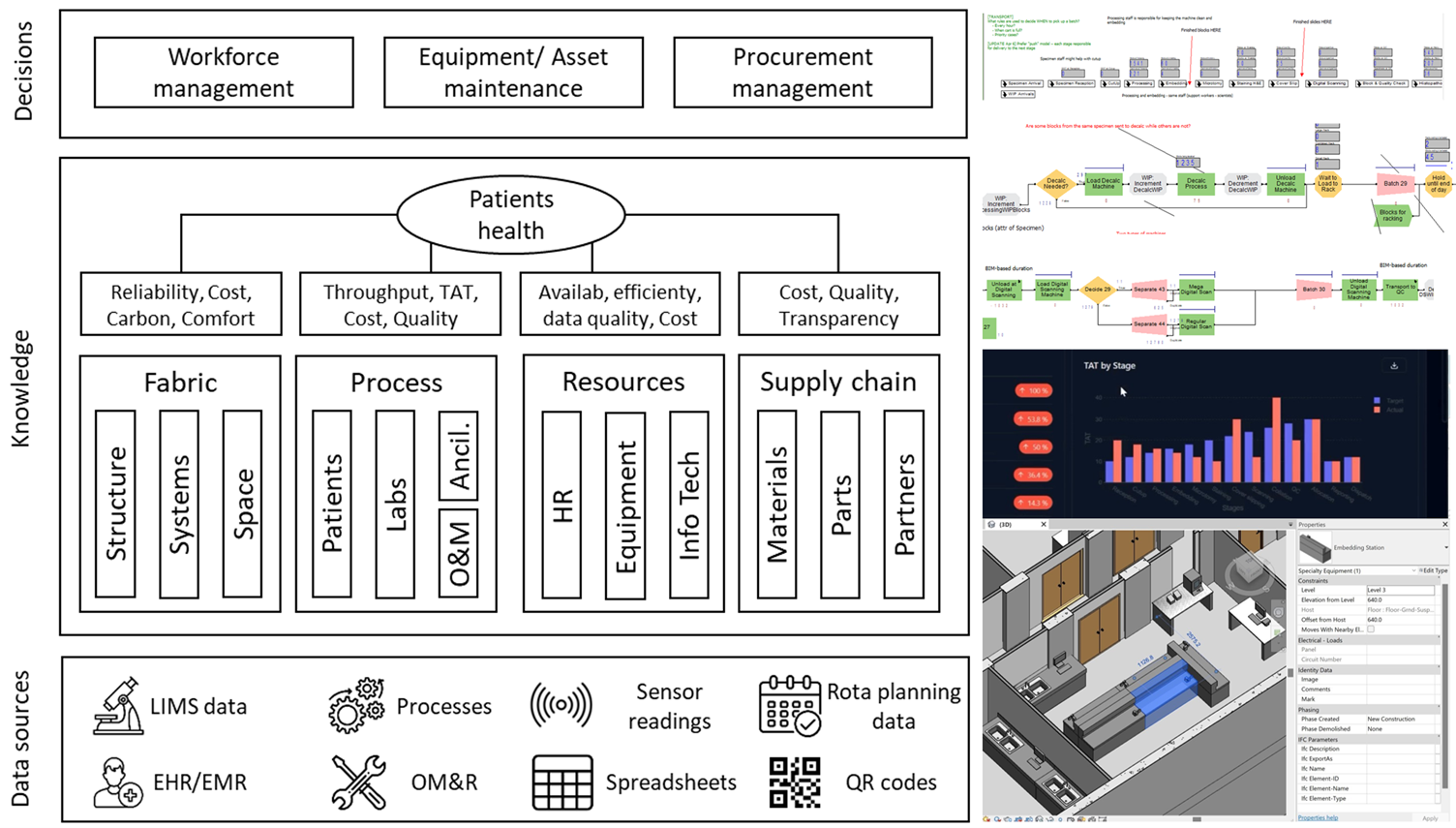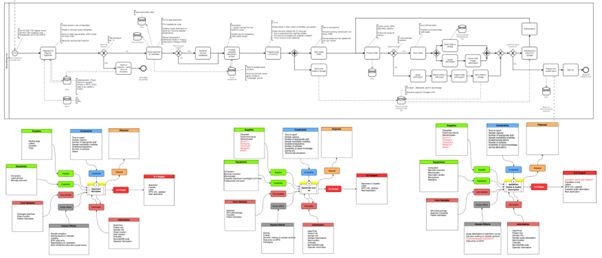Digital Hospitals
Objectives of the research
- Identify the requirements for digitalisation of hospitals and build the connection between physical hospitals and their digital twins through methods for (i) capturing asset and process data; (ii) using the data to generate/update the Digital Twin, (iii) enabling efficient asset-data and human-data interaction;
- Leverage data science and process modelling to (i) quantify uncertainty in system and process behaviour; (ii) couple models in the digital twin to live data from the physical twin, (iii) allow the digital twin to dynamically learn and adapt using the data; and (iv) generate insights about the relationship between hospital systems, processes and patient outcomes;
- Develop a set of digital solutions to demonstrate the benefits of digitalisation and inform future developments at the hospital;
- Leverage the strengths of the partnership to exploit the outcomes and disseminate them across the UK.
The benefits and challenges of the hospital Digital Twin
In this project we are exploring the development and use of DTs of assets, processes and their combinations to deliver better healthcare services. Thus, the cores of the Histopathology Laboratory DTs are the Discrete Event Simulation engine, the Building Information Modelling engine, and the IoT and process monitoring engine. In this project we are adopting the concept of “Twin of Twins” where the digital representation of the assets, patients and processes are interrelated in a cyber-physical system of systems (Figure 1).
The Hospital DT concept can be seen as an integrated digital system that delivers benefits in the following areas:
- information accessibility and transparency and allows to track with high resolution the status of the patients treatment, of the critical assets and equipment and the needed resources;
- identification and control of the key parameters impacting on the patients’ health and quality of the healthcare provision, as the input/output of each stage of the core and ancillary processes, resources and constraints;
- anticipation of the possible disruptions and identification of the best management strategies through process, environmental simulations and scenario analysis; and
- semi-automate and automated decision making enabled by the insights achieved through a better use (data integration, federations) of existing data and the deployment of additional digital technologies.

Figure 1: Hospital Digital Twin Conceptual schema and tools
Some of the main insights that have been discovered through the first year of the project are below:
- There is a tradeoff between the granularity of modelling and the data availability. In fact, the modelling task, the monitoring requirements and the data requirements are closely interrelated and need to be carefully defined;
- The data quality is very important for establishing a DT in the lab setting. The LIMS database is very rich, though there are some “blind spots” that do not allow to monitor all the critical phases of the process;
- Through IoT we can address the blind spots in EPIC data and remove uncertainty from the process monitoring; through the need for real-time data needs to be assessed carefully. We need right-time data based on what analysis is required.
- Data is consumed in an ad-hoc manner and is stored using a combination of structured and unstructured formats. DT applications require standard data modelling approaches to work effectively.
Working on a hospital environment, information is sensitive when related to patients. Thus, this is a primary concern and a sanity check on any data consumed by the DT needs to be carried out. The users’ buy-in is an additional potential blocker for the application development and any DT application needs to have a purpose which is agreed with the owner/user. The availability of quality data is a requirement for the DT application development and needs to be addressed carefully especially because data is handled though a variety of technologies and techniques, which together form the IT infrastructure. Therefore, the development of adequate data modelling approach is a priority, since the consumed data is structured through to a variety of formats. Also, the histopathology department is characterised by predominantly manual processes. Thus, the automated monitoring and operation capabilities of the DTs depend on newly deployed technologies, which complement the existing systems providing additional innovative capabilities.
Funding
NHS Cambridge University Hospitals
Contact
Dr. Anandarup Mukherjee - am2910@cam.ac.uk
Dr. Yin-Chi Chan - ycc39@cam.ac.uk
People
Prof. Ajith Kumar Parlikad, Prof. Duncan McFarlane, Dr. Nicola Moretti, Dr. Anandarup Mukherjee, Dr. Yin-Chi Chan, Dr. Gokcen Yilmaz, Dr. Manu Sasidharan, Dr. Jorge Merino, Momoko Nakaoka, Luning Li, Dr. Greg Hawkridge










